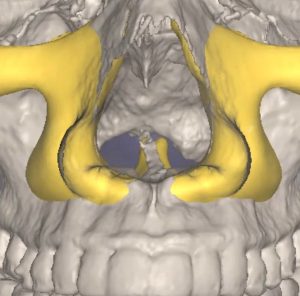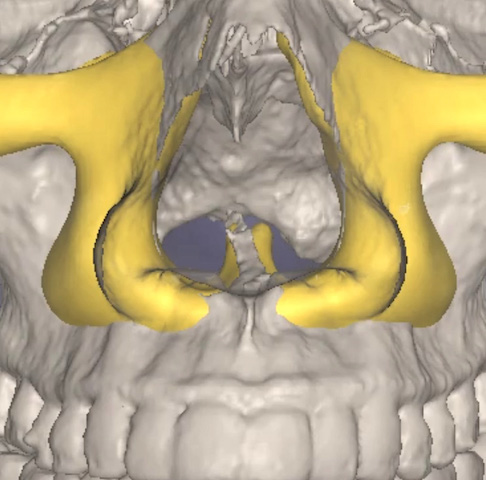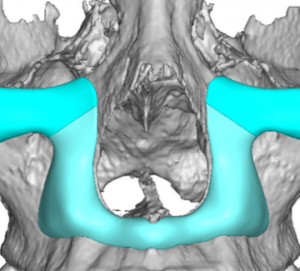Many flatter midfaces in profile have an inadequate central midface projection. This is often called a ‘Lefort I’ deficiency referencing the procedure used historically to correct it when a Class III malocclusion is present. This is most manifest as a nose that looks sunken in at its base at the nostril level above the upper lip. The columella may or may not be retracted as well with a more acute nasolabial angle. The nose above may have an ill defined tip and a low bridge. But most importantly the maxilla is flatter around the pyriform aperture area.

The custom premaxilary-paranasal implant is placed through an intraoral approach using a high vestibular incision. Getting a good two layer musculomucosal layer closure is important particularly when the implant crosses the premaxillary region. Small screw fixation is used up high along the upper flanges of the paranasal component to ensure a snug fit up against the pyriform aperture bone edge. Getting the most push on the nasal base requires being as far against the pyrif0rm aperture as the tissues will permit.
Dr. Barry Eppley
Indianapolis, Indiana




